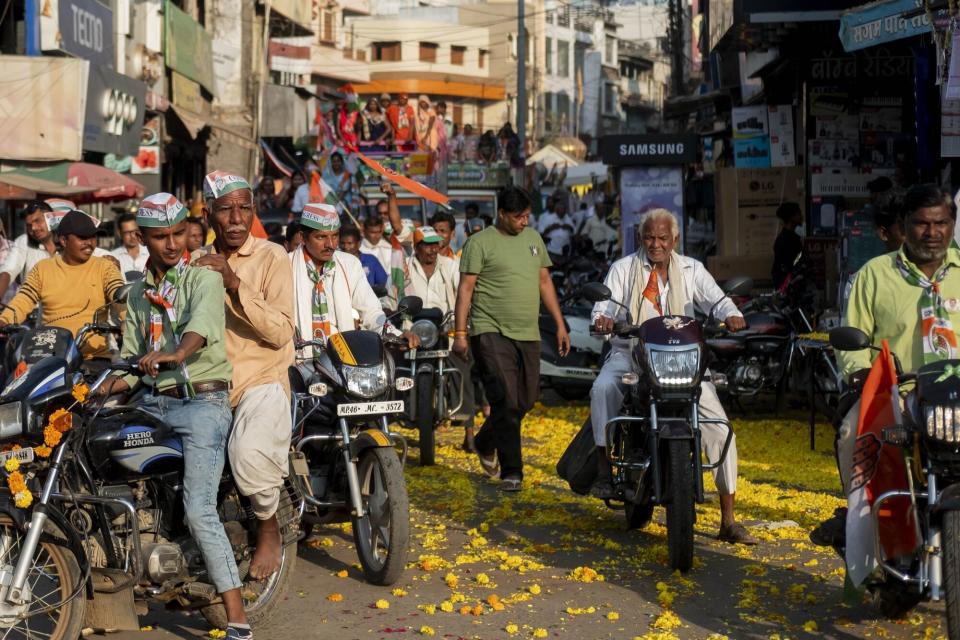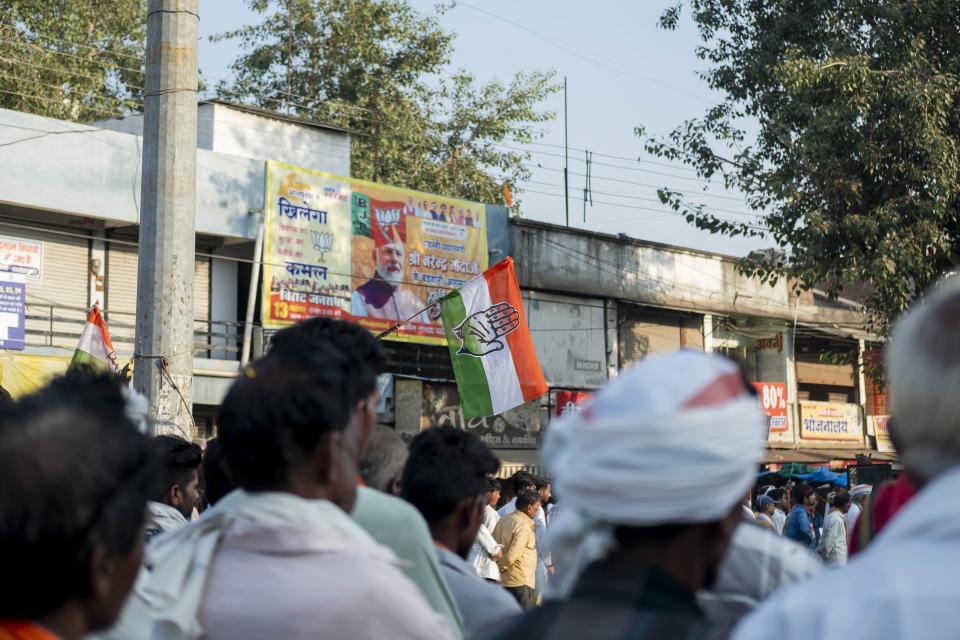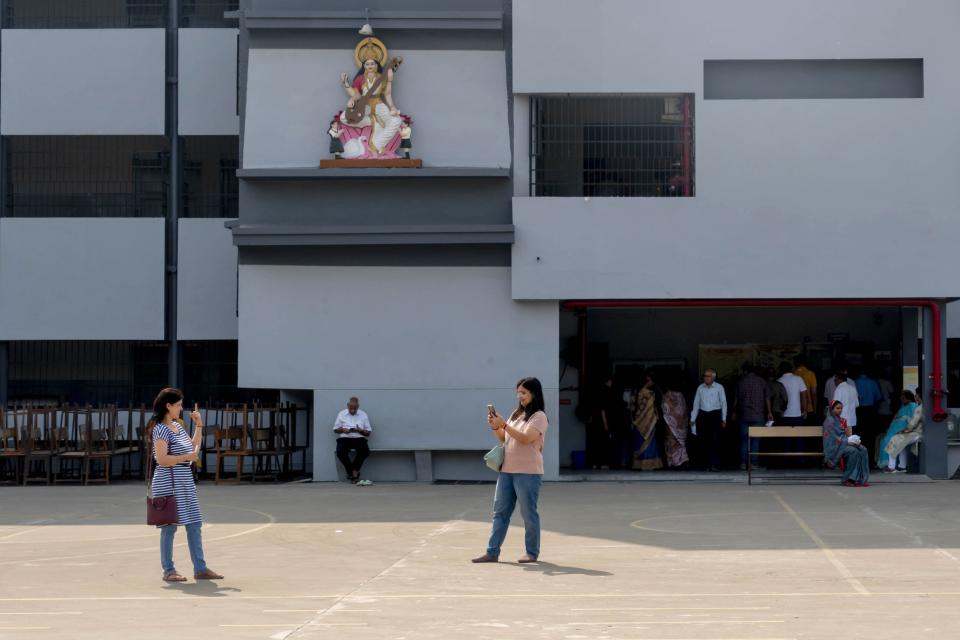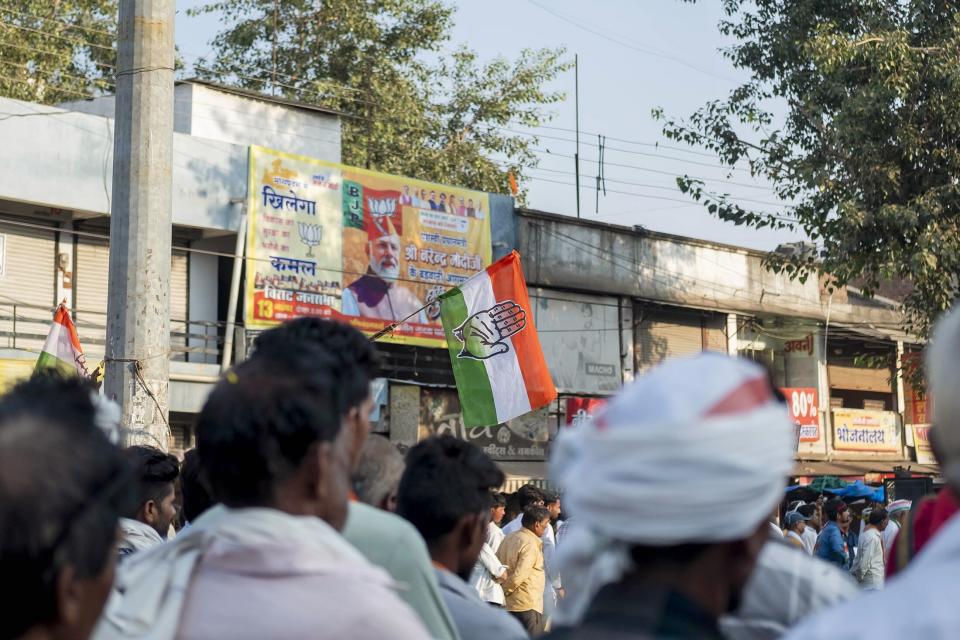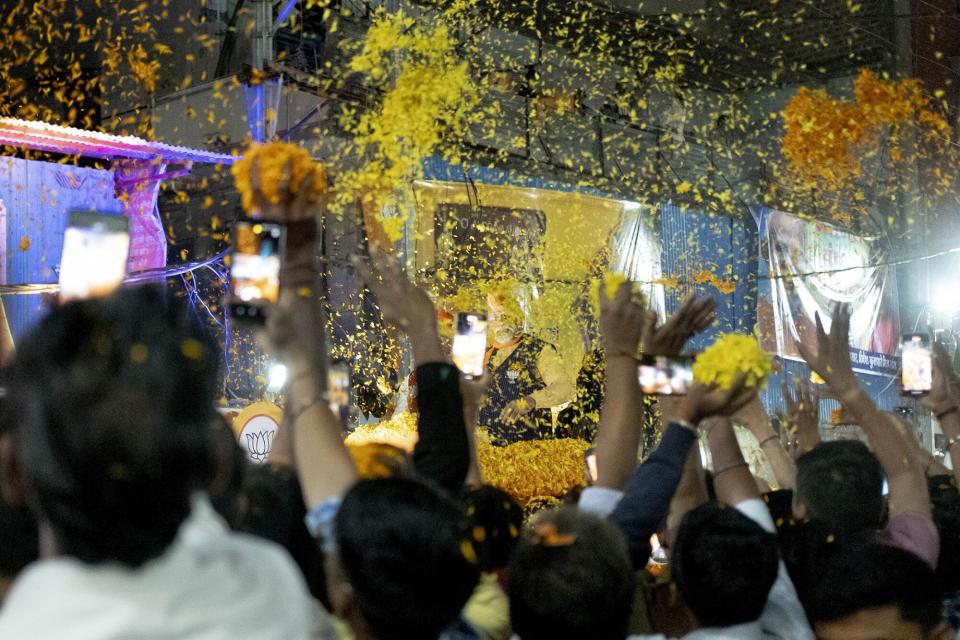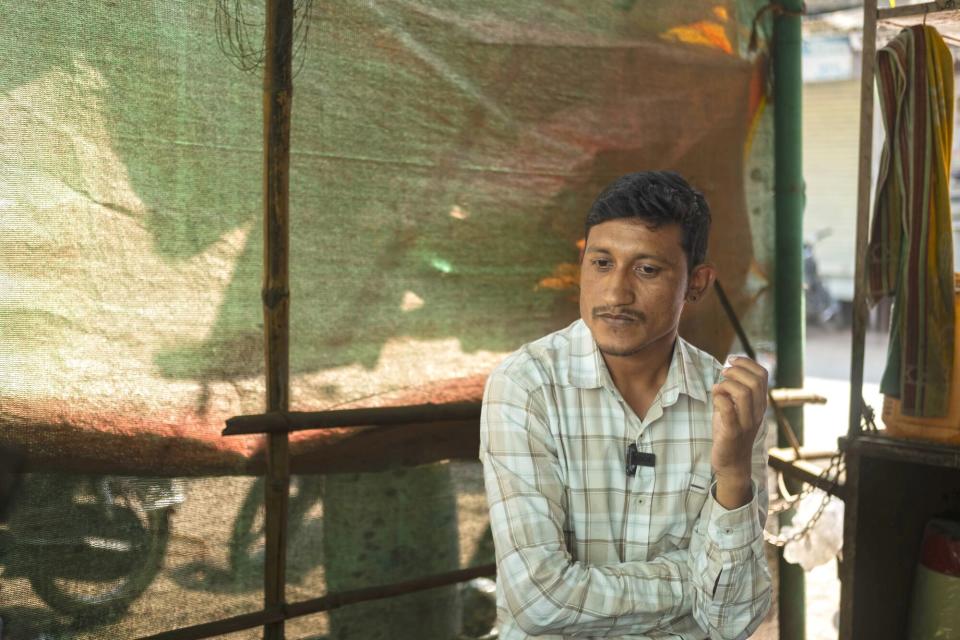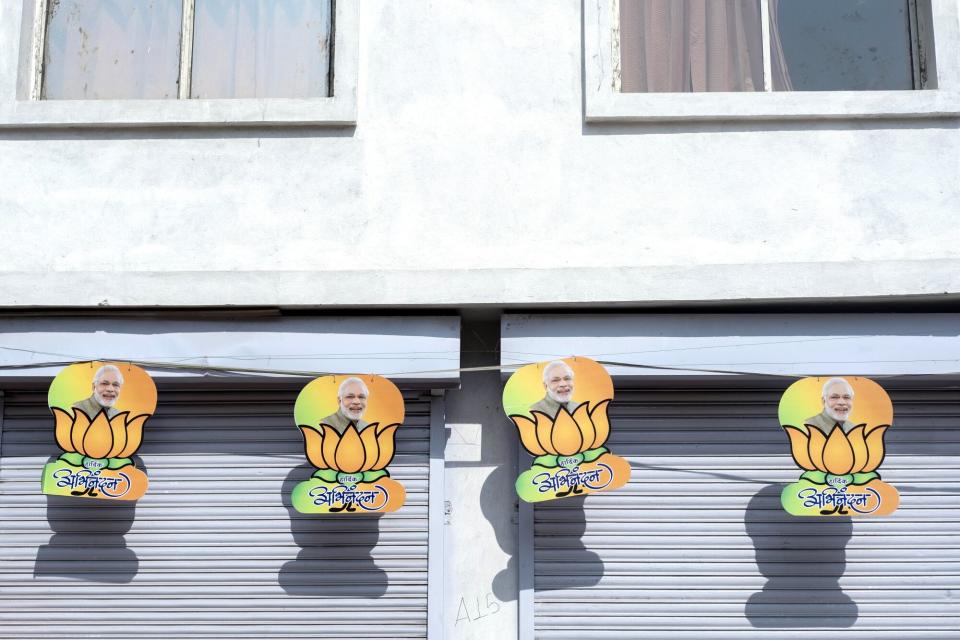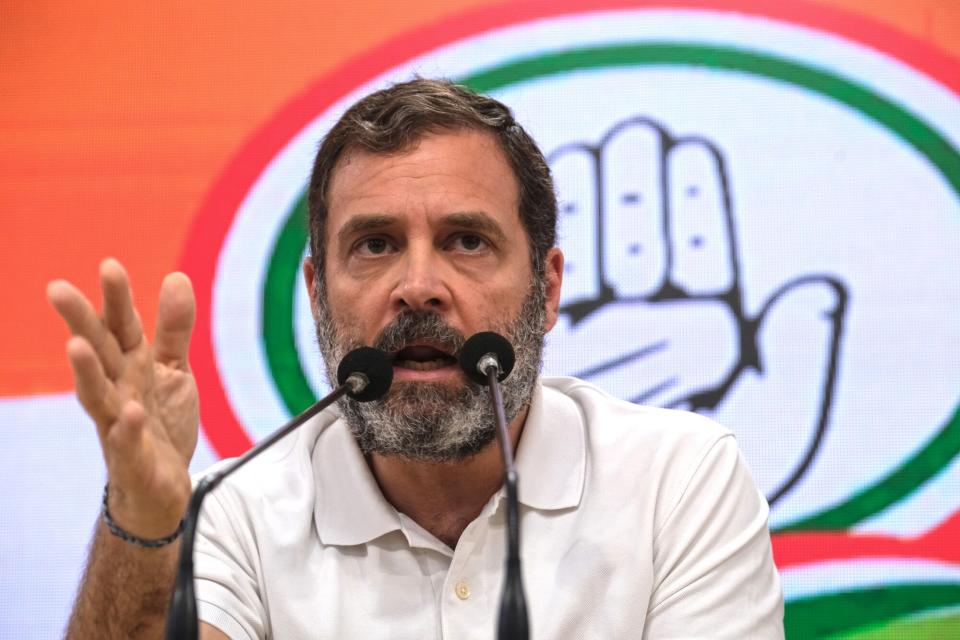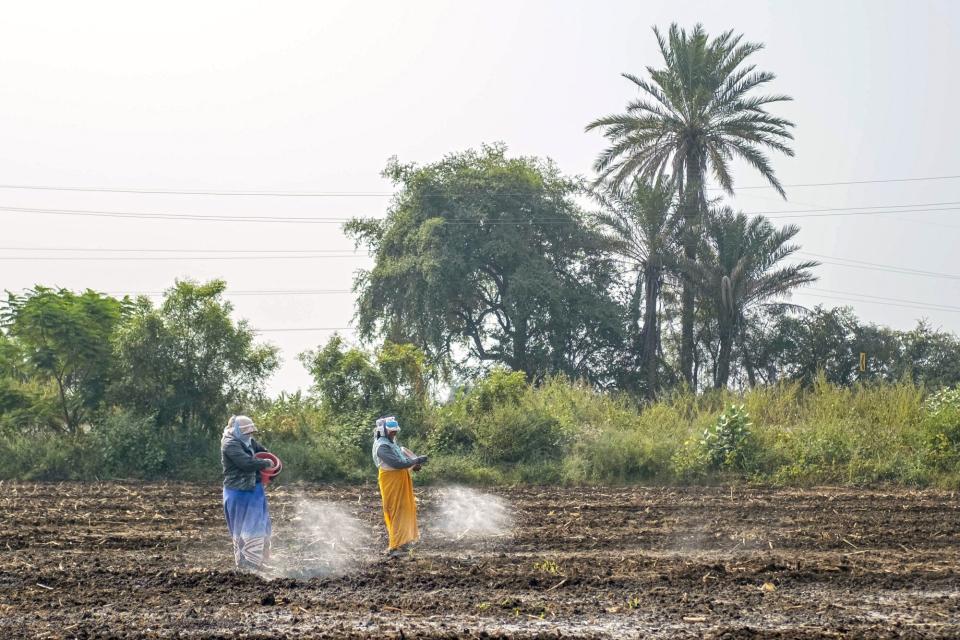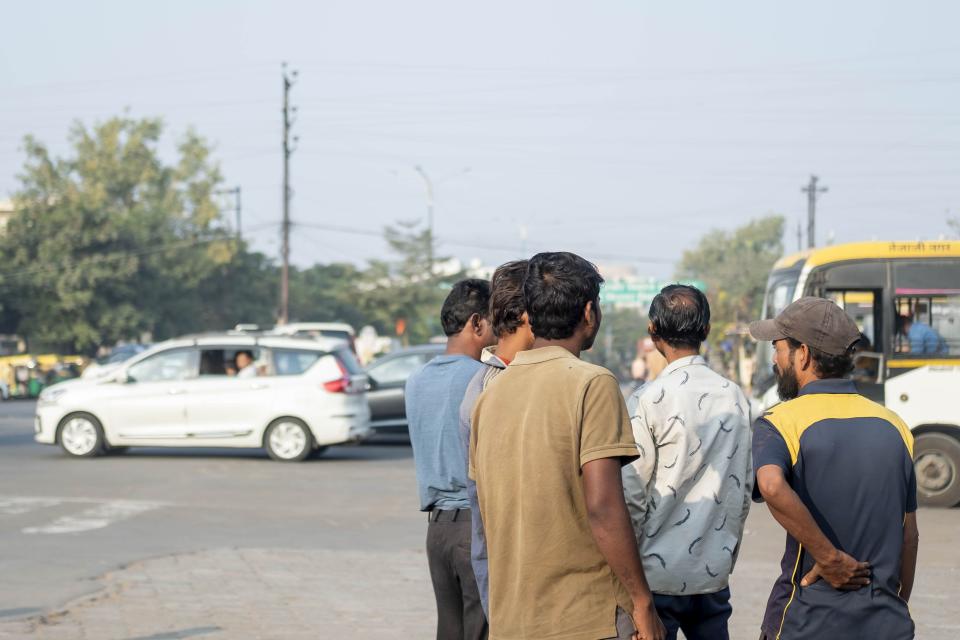Modi’s Rivals Amplify Caste Divide in Bid to Win India Elections
- Oops!Something went wrong.Please try again later.
(Bloomberg) -- Maya Gangle is sprinkling fertilizer in a small field that will soon be sown with lentils. Wearing a blue and mustard sari and gloves to protect her from the chemicals, Gangle’s life has been difficult: Widowed young, the 50-year-old has raised three daughters alone and is working hard to arrange a marriage for her youngest.
Most Read from Bloomberg
Putin Seizes Rights to St. Petersburg Airport From Foreign Investors
Israel Says Hamas Violated Terms of Cease-Fire as Truce Lapses
Bonds Up as Powell Pushback Lasts ‘A Few Seconds’: Markets Wrap
Woman Discovers Over $86 Million Mistakenly Deposited in Her Bank Account
In previous elections, Gangle voted for Prime Minister Narendra Modi and his Hindu-nationalist party, persuaded by their promise of a better life. But despite Modi’s commitment to Hindu unity, she lives with a constant reminder of her place in society. As one of the country’s “scheduled castes,” she’s been barred from the village temple because she’s considered “impure.”
She says she wants change, and that means voting for the biggest opposition party, the Indian National Congress, in the current state elections. Results will be announced Sunday. “This time, it just cannot happen – that we vote for the BJP. We will vote only for Congress,” said Gangle. Her cousin, working alongside her, nodded in agreement.
After years on the back-burner, caste identity is re-emerging as a major consideration in election campaigns. Modi rose to power by emphasizing religious identity, building a powerful coalition of Hindu voters that crossed caste lines. But in its most recent campaigns, Congress has appealed to lower-caste voters, pointing out the stubborn disparities in education and employment that the BJP has failed to remedy.
The state elections are the first test of this strategy. The BJP has easily won most parts of north India in the last two national elections, but recent state polls suggest its popularity is waning. If the Congress party is successful in getting its message across to voters and wins the state elections, it would get the opposition back in the game nationally, says Arati Jerath, a New Delhi-based political analyst.
“If it starts looking like a winner, there could be groups that will gravitate towards the Congress, which had abandoned the Congress,” said Jerath.
Caste Census
Led by Rahul Gandhi, a senior leader of the Congress party and the scion of India’s Nehru-Gandhi dynasty, the opposition has promised to conduct a fresh census to count the numbers of individuals in different castes and their economic welfare, including groups left out of past surveys.
An accurate picture of India’s 1.4 billion people, across dozens of ethnicities, religions and castes, could force a change in the country’s wide-reaching affirmative action programs designed to undo the legacy of caste bias. In 1992, the Supreme Court said no more than 50% of available opportunities could be reserved for lower castes, roughly in line with their percentage of the population at the time.
New estimates suggest that the proportion might be much higher. The US-based Pew Research Center estimated that 69% of India’s 1.4 billion population belonged to various lower caste communities in 2021. A survey conducted in the state of Bihar earlier this year showed similar results, and the state government subsequently raised the quota for affirmative action posts to 65%. The move is being challenged in the courts.
India’s census hasn't historically counted what are known as “Other Backward Classes,” a designation that varies but includes some Dalits, the so-called untouchables. In the most recent count, conducted 12 years ago, roughly 25% of the population was identified as belonging to the Scheduled Castes and Scheduled Tribes. A fresh census — and one that includes the Other Backward Classes — could lead to a proportionate change in the percentage of seats reserved in higher education, government jobs and legislatures at various levels of government.
The BJP has criticized the opposition’s push for a caste survey, but it’s shifted tone more recently, with Amit Shah, India’s home minister and Modi’s right-hand man, not ruling it out.
“The BJP has been softening its stand on this, because I guess they’re worried about the kind of traction this plank of the opposition will get in the national elections,” said Jerath, the political analyst.
India’s Unemployment Problem
Anil Iskel agrees with the Congress – and Rahul Gandhi’s – approach.
Iskel, who also belongs to a lower caste, says he’s waiting for a government job to come open and picking up minimum wage work in the meanwhile. He’d like to get a job as a police constable, he said, a low-ranking position that doesn’t require a college education.
He sat with his friends at a tea shop in Madhya Pradesh’s Barwani district discussing their employment prospects. Since graduating high school, Iskel has been trying to qualify for a government job, a common plight in the state. Some 3 million people registered for state employment assistance last year, but less than 2% found work, according to the state’s economic survey.
The proposed caste census might widen the pool of available jobs, he said. “In schools, a child’s caste is considered while giving admissions. Loans are not given based on that. Things will improve if there is a caste census and proper reservations come,” he says.
Iskel’s struggle and the debate over India's quota system speaks to the country’s larger problems of unemployment and underemployment. The national unemployment rate reached a two-year high of about 10% in October, according to the Centre for Monitoring Indian Economy Ltd., a private researcher.
When coupled with inflation, which was at 4.9% in October, and rising food prices, households subsisting on minimum wage incomes are struggling.
To lure voters, politicians in Madhya Pradesh are giving out cash and freebies. The BJP-run government recently launched a scheme where eligible women receive around $12 to $15 every month. Aimed at female voters, who form a significant part of the party’s base, the handout has been immensely popular.
The Congress, in turn, has promised free smartphones, cheaper electricity and subsidized cooking gas, among other supports.
Modi Factor
The promise of freebies aside, Modi – and his Hindu majoritarian policies — remain extremely popular. One November evening in Indore, Madhya Pradesh’s largest city, thousands gathered to cheer a Modi motorcade through one of the city’s busiest streets. BJP banners draped the sides of buildings, posters hung outside shop fronts and life size cutouts of the prime minister were mounted alongside the route.
Smarika Sharma, a 29-year-old architect, held up a “We love U Modiji” poster. She’d said she’d been preparing for three days for the event. Her father, K.G. Sharma, described himself as, “a blind supporter of Modiji. Blind.” For this middle-class family, which had just returned from a US road trip, Modi is the symbol of progress, India’s rising soft power and skillful international diplomacy.
The parade route was packed with a diverse group — affluent families like the Sharmas, priests who revere Modi and cart vendors who admitted that they may not vote for him again. As the clock ticked closer to Modi’s arrival, the crowd chanted his name and Hindu slogans. When he appeared, wearing a black vest with a scarf in BJP saffron, a shower of marigold and rose petals floated through the air.
Ankita Kasera, like Sharma, lauded Modi for elevating India’s global standing. The 33-year-old school teacher said she also liked Modi’s approach to India’s large Muslim minority. “Modi promotes Hinduism,” said Kasera, on the sidelines of the parade route. She approved of Modi’s government revoking the autonomy of India’s only Muslim-majority state, Jammu and Kashmir, and of the law that bars some Muslim migrants from becoming citizens of India. “He is my family member and that is why I love him,” said Kasera.
The Bigger Fight
Analysts say Modi’s majoritarian approach may not work this time – in Madhya Pradesh or nationally.
One factor that could sway the vote in the national elections, which begin in the spring, is a joint effort by several opposition parties to take on the BJP. The new opposition alliance of more than 25 parties is expected to coordinate their candidates across the country to try to break the 30-seat majority that the BJP currently enjoys in the parliament.
The appeal to caste identity is another way to target the ruling party base. The opposition often describes the BJP as a party of upper castes and points to Modi’s strong ties to wealthy businessmen like Gautam Adani.
“One way of mobilizing voters is the promise of redistribution and a caste survey is a step toward it,” said Praskanva Sinharay, a political scientist and research associate at the Centre for Financial Accountability. “We see that it is echoing at the popular level. Now, whether it’ll turn into votes, that we have to see.”
In the lentil fields, Maya Gangle has heard of the proposed caste survey. She’s not sure what to make of it, but she is certain she wants more than just cash handouts and the promise of a rising India. Her main desire, she says, is to lead a more dignified life, and to get access to the village temple. “Maybe if the Congress comes to power something will change,” she said.
Most Read from Bloomberg Businessweek
Anduril Builds a Tiny, Reusable Fighter Jet That Blows Up Drones
No Laws Protect People From Deepfake Porn. These Victims Fought Back
Soaring Canadian Housing Costs Power a Population Boom in Alberta
Microsoft Is Happy Being the Co-Pilot on the OpenAI Rocket Ship
Wall Street Takes Fight Over Arcane Banking Rules to Main Street
©2023 Bloomberg L.P.

